Alberta is more than just a beautiful province in Canada. This area is home to a UFO landing pad and one of its parks contains some of Earth’s most fascinating dinosaur specimens. This enormous province is renowned for its diverse landscapes, freshwater reserves, and rich minerals. But it’s also famous for its history, such as its First Nations Groups that inhabited the land nearly 10,000 years ago!
To learn more about this Canadian gem, check out these 25 fun and exciting Alberta facts, from practical information to quirky tidbits!
Alberta Is Named After a Princess!
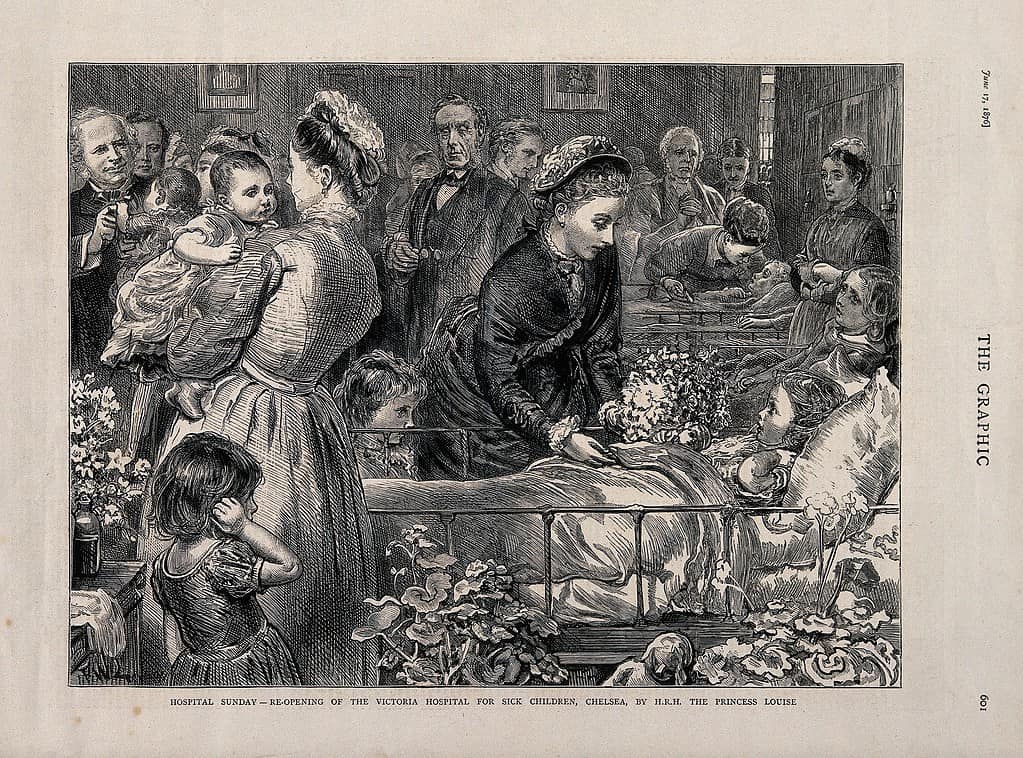
The princess was passionate about the arts, higher education, and the feminist movement.
©Wellcome Collection https://wellcomecollection.org/works/c95kb4g8?wellcomeImagesUrl=/indexplus/image/V0012892.html CC BY 4.0 via Wikimedia Commons – License
Princess Louise Caroline Alberta was Queen Victoria’s fourth daughter and also the wife of the Governor General of Canada, Marquess of Lorne. The District of Alberta was officially created as part of the Northwest Territories in 1882 when the Marquess of Lorne was still in power. Princess Alberta inspired the district’s name, which remained after it officially became a province in 1905. Let’s dive into some more Alberta facts!
It’s the Fourth-Largest Canadian Province
Alberta is Canada’s fourth largest province after Quebec, Ontario, and British Columbia. Alberta contains 255,541 square miles and is 1.56 times larger than the state of California. It is also the fourth most populous province — with a population of 4.3 million — and it’s one of the fastest-growing areas in Canada, adding around 10,000 people quarterly.
First Nations Groups Have Inhabited Alberta For 10,000 Years
The area known as Alberta was home to several Native American groups for at least 10,000 years and going back 500 generations. Researchers found evidence of their existence in ancient rock carvings and a 10,000-year-old spearhead in the Athabasca region. The native people led nomadic lifestyles and primarily occupied the Alberta Plains in the province’s southern region.
Banff Is Canada’s First National Park

The most popular times to visit Banff National Park are summer and winter.
©nurserowan/iStock / Getty Images Plus via Getty Images
Established in 1885, Banff is Canada’s oldest national park! You can find this breathtaking and scenic natural area in Banff, Alberta, which more than four million people visit annually. Banff National Park protects Rocky Mountain peaks, glacial lakes, a picturesque mountain town, and all the wildlife within its borders. Canada’s first national park also offers spectacular year-round views of the Northern Lights.
Alberta Contains Over 600 Freshwater Lakes
Alberta might be landlocked, but plenty of water is within its boundaries. With more than 600 freshwater lakes dotting its total area, Alberta is a paradise of crystal-clear water. Most of the natural lakes reside in the northern regions, and only a few are in the southern regions. Lake Claire is the largest lake located entirely in Alberta, covering 554 square miles. Lake Athabasca is officially the largest lake, though it’s both in Alberta and Saskatchewan, with 886 square miles of its surface area residing in Alberta.
Alberta Adopted Its Flag in 1968
The provincial legislature of Alberta adopted the flag on June 1, 1968, after approving the unique design. Alberta’s flag depicts a red St. George cross on a white background, symbolizing the Hudson’s Bay Company and its English origin. The flag also features snow-capped Rocky Mountains and fertile rolling green hills.
European Settlers Arrived in the 1750s
The first European settlers likely reached the Alberta region in the mid-1700s. Frenchmen began traveling inland to establish forts and trade furs with native peoples in the 1730s, and the first account of a fur trader in Alberta occurred between 1754 and 1755. Europeans established the first settlement in the area in 1788, including Fort Chupewyan and Fort Vermilion.
It Is Only One of Two Landlocked Provinces
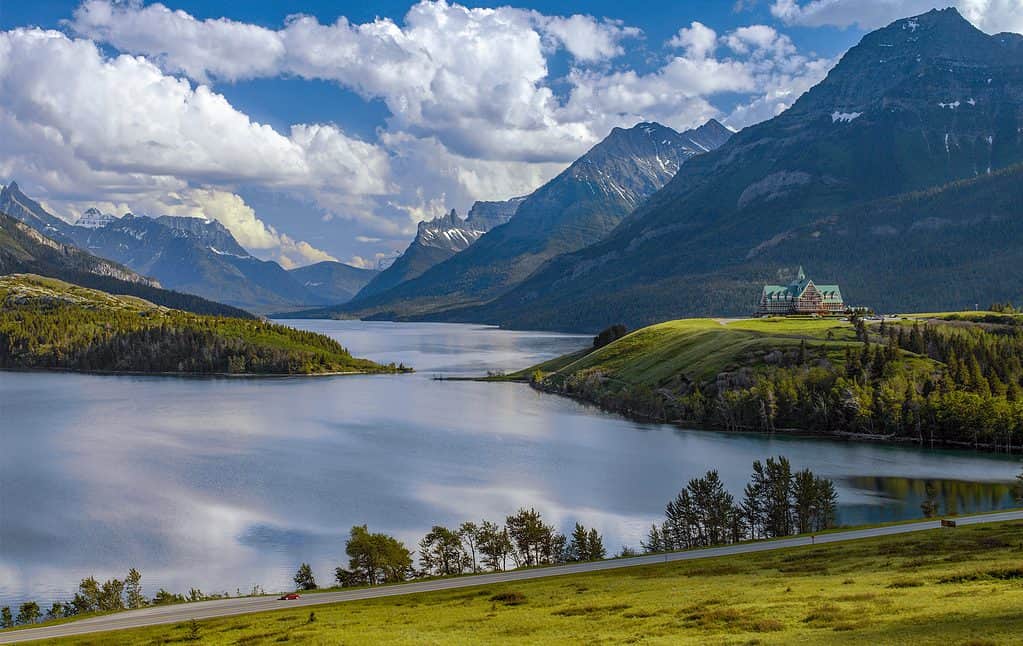
Waterton Lakes National Park in Alberta borders Glacier National Park in Montana.
©Steve Allen/Shutterstock.com
Alberta is only one of two landlocked provinces in the country. The state of Montana borders it to the south, British Columbia to the west, the Northwest Territories to the north, and Saskatchewan to the east. Saskatchewan is the only other landlocked province in Canada. Alberta is also a Prairie Province and occupies the western part of the country.
Alberta Contains Canada’s First Planetarium
Opening on September 22, 1960, the Queen Elizabeth Planetarium was the first public planetarium in Canada! It’s inside Coronation Park in Edmonton and operated from 1960 until 1983. Thankfully, it reopened again in 2023. Visitors can now experience a wholly renovated space dedicated to the solar system, scenic trails, and picnicking.
Host of the 1988 Winter Olympics
The 1988 Olympic Winter Games took place in Alberta between February 13th and 28th. It was the first Winter Olympics held for 16 days. This riveting and action-packed multi-sport event was in Calgary at the McMahon Stadium, where millions of viewers from around the world tuned in for alpine skiing, bobsledding, cross-country skiing, figure skating, and ice hockey.
Home to One of the Biggest Rodeos in the World
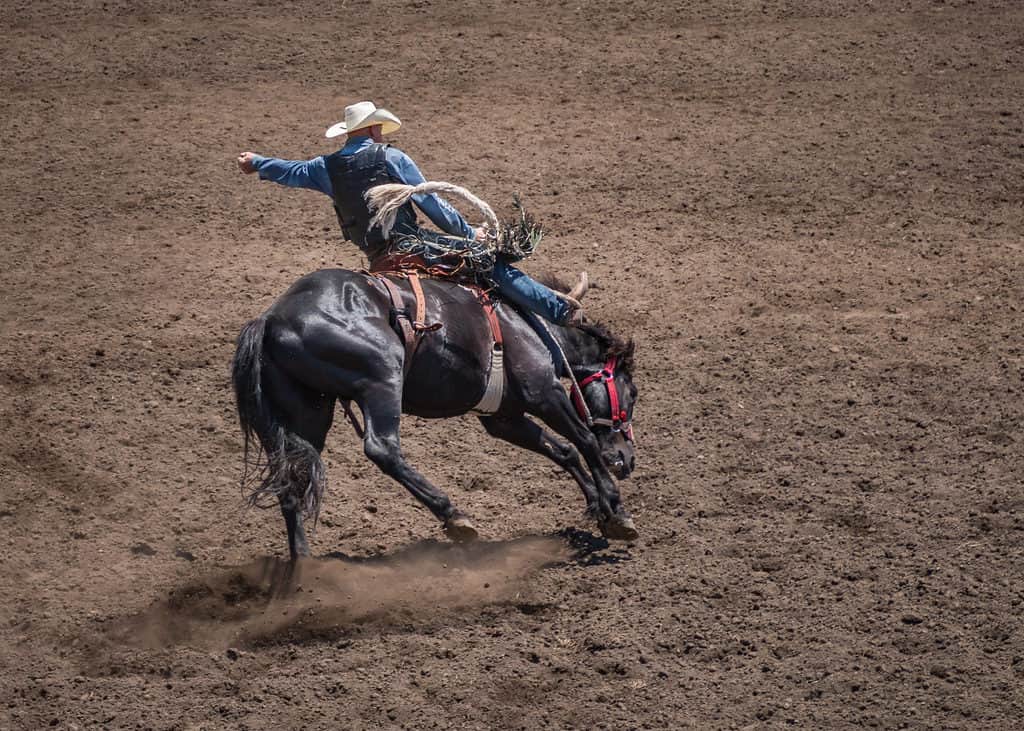
The Calgary Stampede hosts one million people annually.
©Timothy S. Allen/Shutterstock.com
Founded in 1912, the Calgary Stampede is one of the biggest and best rodeos in the world. This festival celebrates the heritage and ranching of the West and features many agricultural and cowboy-themed events. Along with the main sporting events, you can check out chuckwagon races, stage shows, art exhibits, a parade, and delicious food. You will find this huge rodeo every July at Stampede Park in Calgary.
Contains the Third-Largest Reserves of Crude Oil in the World
Behind Venezuela and Saudi Arabia, Alberta holds Earth’s third-largest known oil reserve. As a whole, Canada accounts for 10% of oil reserves, containing an estimated 171 billion barrels. Of that 171 billion, 166.3 billion barrels come from Alberta, specifically its oil sands. But as technology improves, its oil reserves could increase substantially by more than 300 billion barrels.
There’s a Star Trek-Themed Village

Calling all Star Trek lovers! Alberta is home to a Vulcan-themed village.
©todaydesign/iStock via Getty Images
Vulcan, Alberta, is the “Official Star Trek Capital of Canada” as of March 2010. This small and charming town sits in the prairies of southern Alberta, home to around 2,000 people. Along with a Star Trek-themed tourist center, you can check out an impressive replica of the Starship Enterprise. While it’s only a coincidence that the village bears the name of Spock’s home world, Vulcan, Alberta, embraces the quirkiness!
Home to the First Dinosaur Nesting Site Uncovered in Canada
In 1987, a local teenager found eggshell fragments in Warner, Alberta, which led to a fascinating surprise. The fragments turned out to be dinosaur eggs, and the site is the only and most extensive nesting area discovered in Canada. Today, it is an active research site for scientists and a dinosaur and heritage museum. Check out the embryonic dinosaur material and fossils and learn about the creatures that once roamed Alberta!
The Great Horned Owl Is the Province’s Official Bird
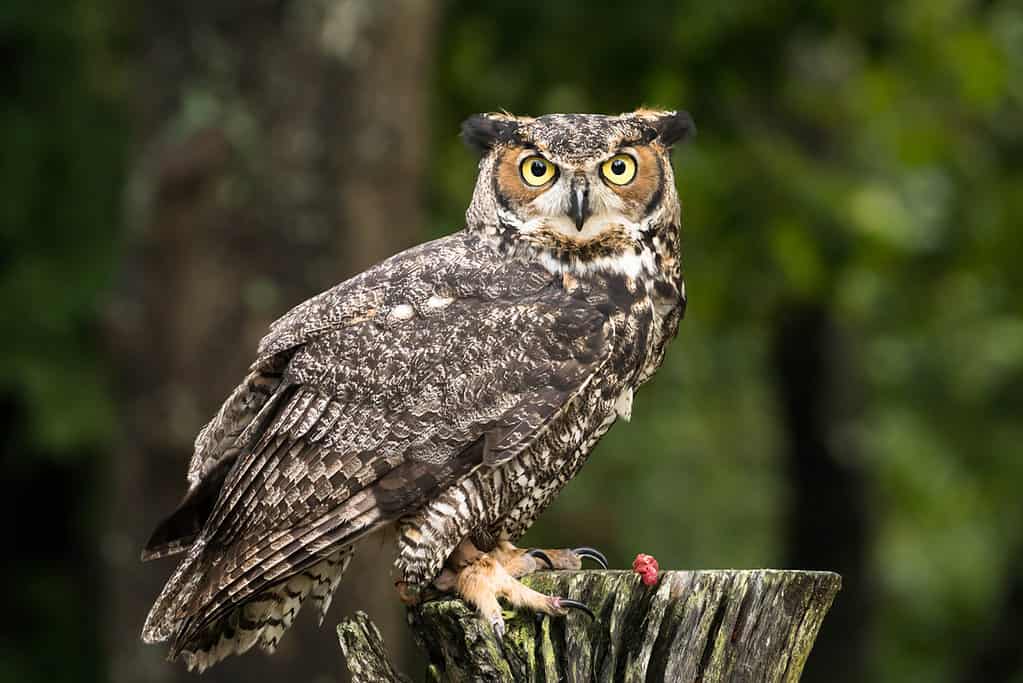
Great horned owls are some of the most widespread owls in North America
©iStock.com/makasana
The children of Alberta selected the great horned owl as the provincial bird in 1977. This wise old owl is a year-round resident of the province and an iconic species of Canada, notable for its horn-like ear tufts and round, unwavering eyes. You can find the great horned owl in forests, open woods, and river valleys.
Alberta Has One of the Highest GDPs in the Country
Alberta’s per capita GDP was $73,742 in 2022, the highest among Canadian provinces. Alberta has abundant natural resources, especially oil and natural gas, which comprise the most significant proportion of its GDP. After mining, quarrying, and extraction, Alberta has substantial real estate, construction, and manufacturing sectors. Saskatchewan had the second-highest per capita GDP in 2022 at $64,560.
World’s First UFO Landing Pad
The world’s first UFO landing pad sits in St. Paul and stands as a sign of unity, along with the accompanying visitor center. It was built for the Canadian centennial celebration in 1967. Visitors can walk onto the pad and get a 360-degree view of the town below. Don’t forget to peruse the local artisan shops and grab a bite to eat!
Alberta Distributes 70,000 Seedlings Annually to First-Grade Students
Alberta Forest Week is an annual tradition that coincides with Arbor Day festivities. As part of the celebration and continued conservation efforts, the Alberta government delivers 70,000 tree seedlings to first graders across the province and allows children to plant their own trees. For 60 years, Alberta grade one students have learned about the value and contribution of trees.
The Wild Rose Is the Provincial Flower
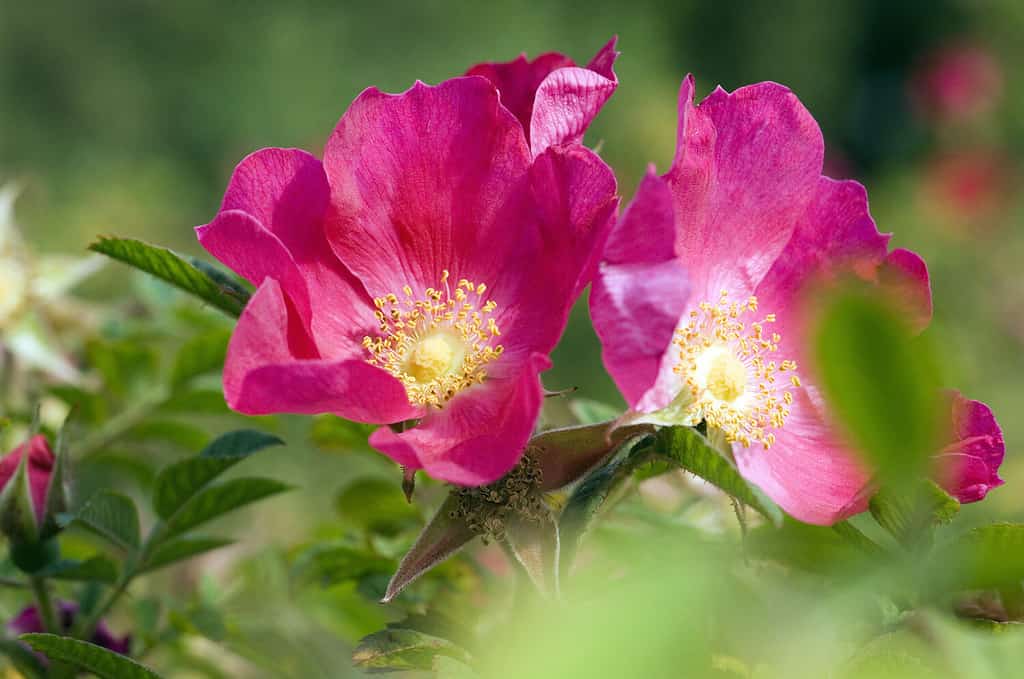
Wild roses grow abundantly across Alberta.
©Manfred Ruckszio/Shutterstock.com
The wild rose became Alberta’s floral emblem in 1930. It flourishes throughout the land and brings a lovely pink color to the countryside. Also known as the prickly rose, schoolchildren selected this colorful rose as the provincial flower due to its widespread abundance and lovely appearance.
Edmonton Is Alberta’s Capital City

Edmonton is a growing city due to its excellent schools and strong job market.
©TetyanaT/Shutterstock.com
Alberta’s capital city is Edmonton, situated on the North Saskatchewan River in the province’s central region. However, it is one of Canada’s most northern major city hubs and is a gateway to undeveloped northern areas. With more than one million people, Edmonton is one of the fastest-growing cities in Canada.
Turner Valley Contains Some of the Purest Oil in Canada
Turnery Valley in Alberta was Canada’s first and most significant oilfield known for its high-quality light oil. The oil field began production in 1914 and peaked during World War II, producing 95% of the country’s oil. While the valley declined in the 1940s, it is still a major producer of natural oil and gas for Canada.
There’s a Beaver Dam Visible From Space!
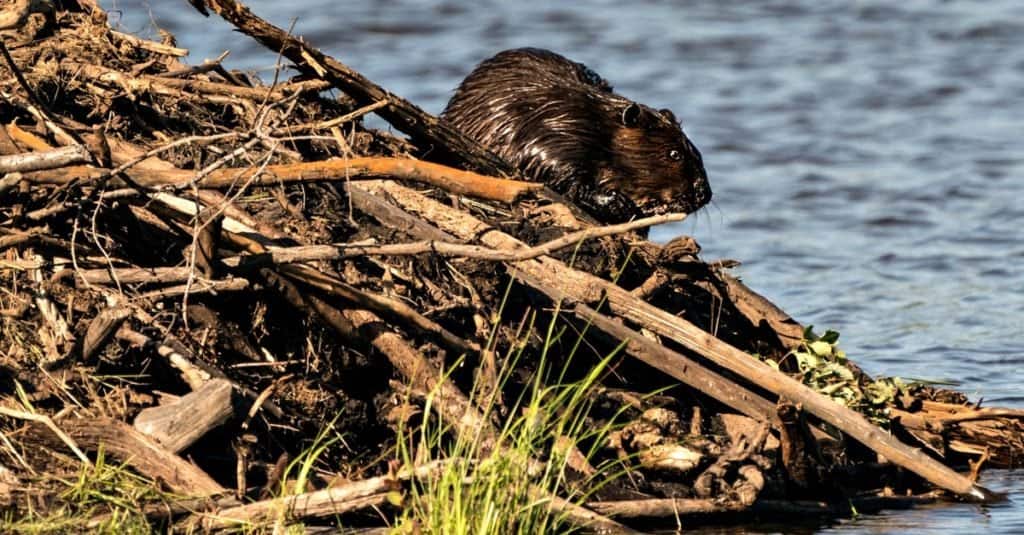
Beavers build enormous dams to offer protection from predators.
©Rejean Bedard/Shutterstock.com
Are you curious as to how big beaver dams can get? Visit Alberta! Located at the southern end of Wood Buffalo National Park, the world’s largest beaver dam sits more than 2,700 feet from one end to the other. It’s so enormous that satellite images capture pictures of it from space! The dam is in a remote and undisturbed portion of the park, hidden from visitors. But just knowing Alberta contains one of the longest beaver dams on Earth is astonishing!
Albertans Enjoy 2,400 Hours of Sunshine Each Year
Calgary, specifically, receives more than 2,400 hours of sunshine each year, while places like Edmonton still garner an impressive 2,299 hours. While Alberta’s sun exposure doesn’t compare to some of the sunniest places in the United States or other parts of the world, it’s still a consequential amount for Canada.
Edmonton Contains the Largest Municipal Park in Canada
Located in the Edmonton metropolitan area of Alberta, the North Saskatchewan River Valley Park System is the largest municipal park in Canada. This urban park system contains 20 major parks and nearly 100 miles of trails. The acreage spreads throughout the city and offers residents and visitors abundant places to stroll, jog, and bike.
Dinosaur Provincial Park Contains Some of the Most Important Fossil Specimens on Earth

Dinosaur Provincial Park is in the badlands of Alberta.
©Joanne Merriam, CC BY-SA 3.0, via Wikimedia Commons – License
The Dinosaur Provincial Park is two hours east of Calgary in the Red Deer River Valley. This valley is famous for its harsh badland landscape and numerous dinosaur fossils, many highly significant to the world’s knowledge of the age of dinosaurs. This site is a treasure trove of dinosaur fossils, some 75 million years old.
The photo featured at the top of this post is © JZAerial Inc/Shutterstock.com
Thank you for reading! Have some feedback for us? Contact the AZ Animals editorial team.







